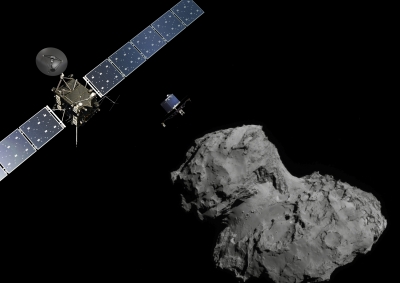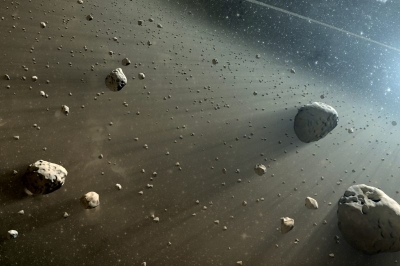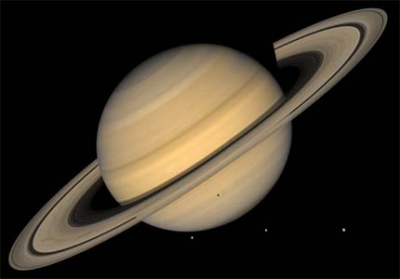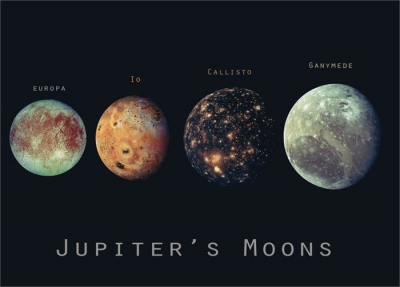
The spacecraft Rosetta and its lander Philae travelled for ten years across the Solar System to reach the comet 67P/Churtyumov-Gerasimenko. To get enough speed, the spacecraft had to loop around the Earth three times and Mars once, using the gravity of the planets to slingshot through space. On the way they passed lots of other fascinating objects. Finally, in 2014, Philae made the first ever successful touchdown on a comet.
Rosetta was set to be launched on 12 January 2003 to rendezvous with the comet 46P/Wirtanen in 2011. This plan was abandoned after the failure of an Ariane 5 ECA carrier rocket during Hot Bird 7’s launch on 11 December 2002, grounding it until the cause of the failure could be determined. In May 2003, a new plan was formed to target the comet 67P/Churyumov–Gerasimenko, with a revised launch date of 26 February 2004 and comet rendezvous in 2014. The larger mass and the resulting increased impact velocity made modification of the landing gear necessary.
After two scrubbed launch attempts, Rosetta was launched on 2 March 2004 at 07:17 UTC from the Guiana Space Centre in French Guiana, using Ariane 5 G+ carrier rocket. Aside from the changes made to launch time and target, the mission profile remained almost identical. Both co-discoverers of the comet, Klim Churyumov and Svetlana Gerasimenko, were present at the spaceport during the launch
Giant comet
The comet that Rosetta and Philae visited is 4.1 km (2.5 miles) long. That’s roughly the same height as 10 Empire State Buildings stacked up!
Picture Credit : Google





